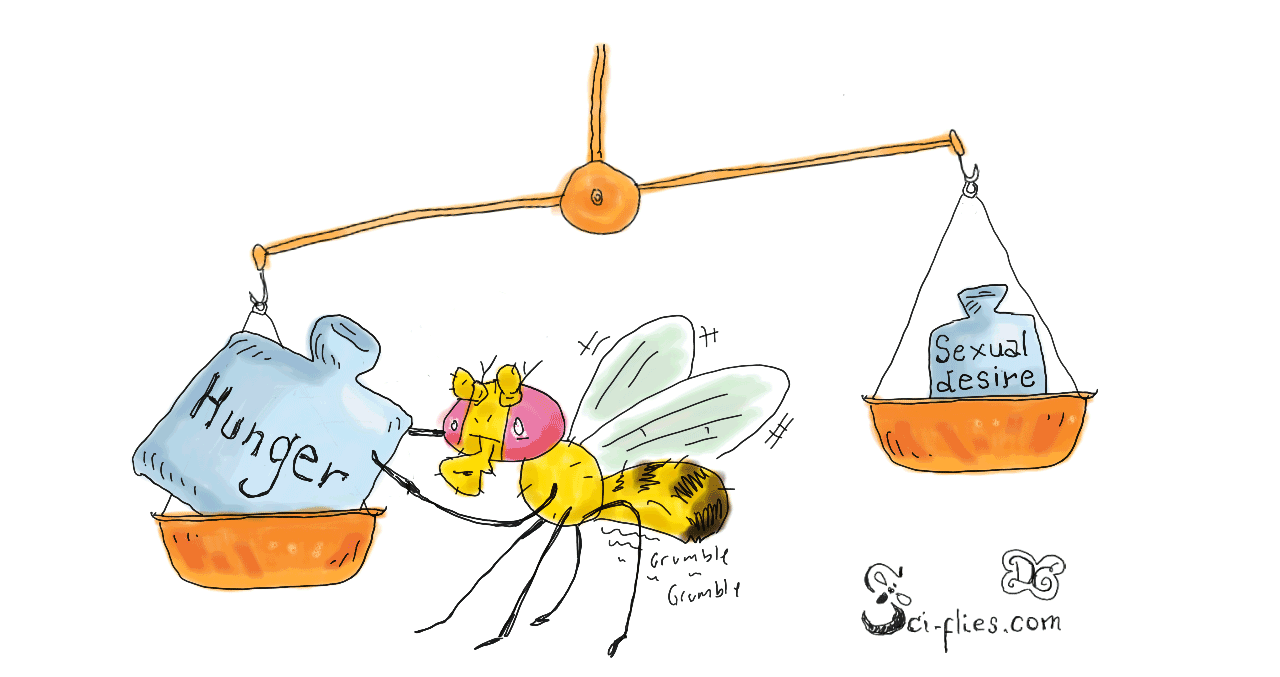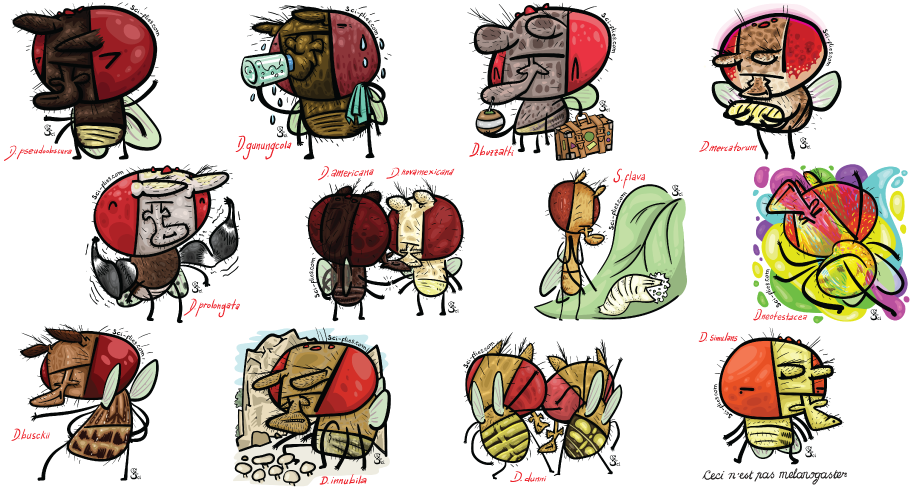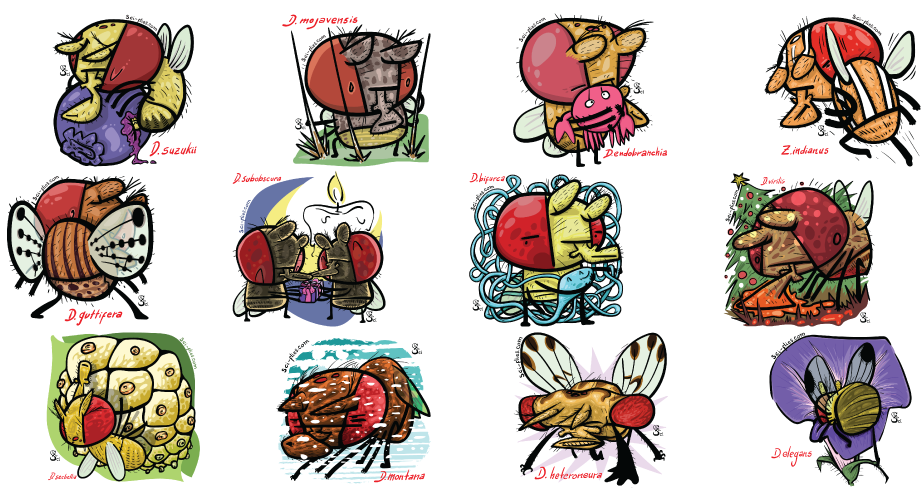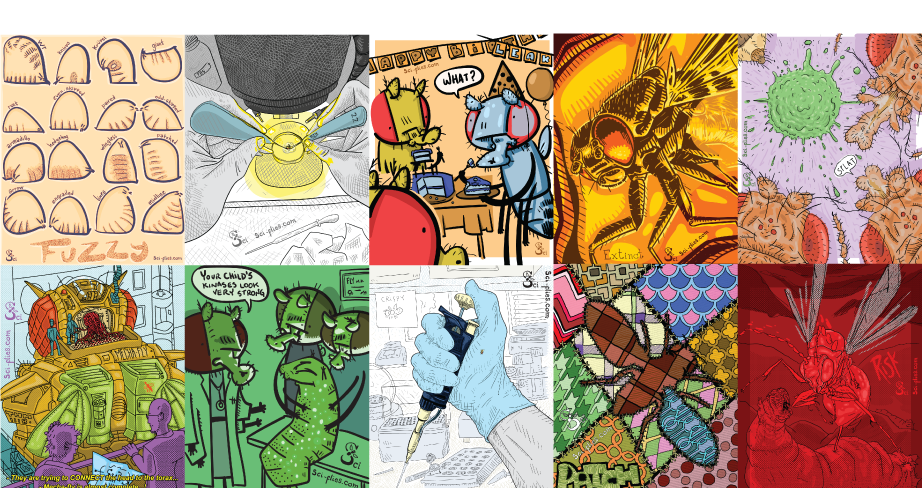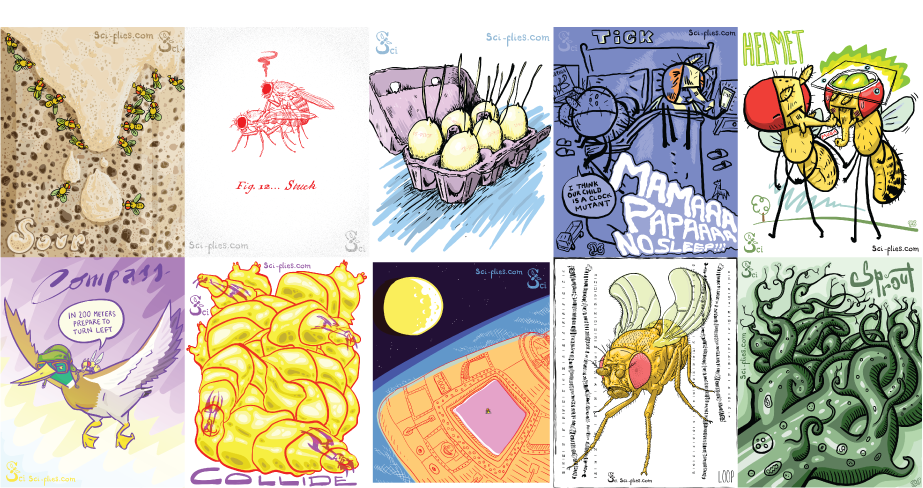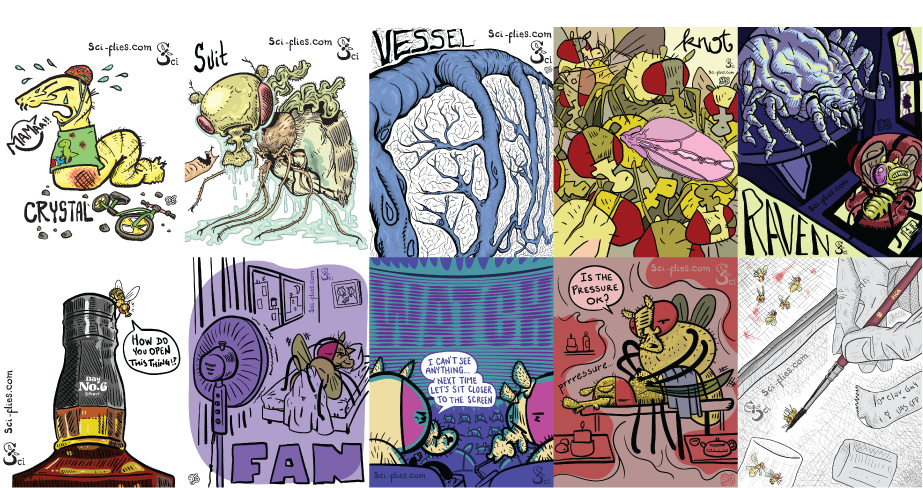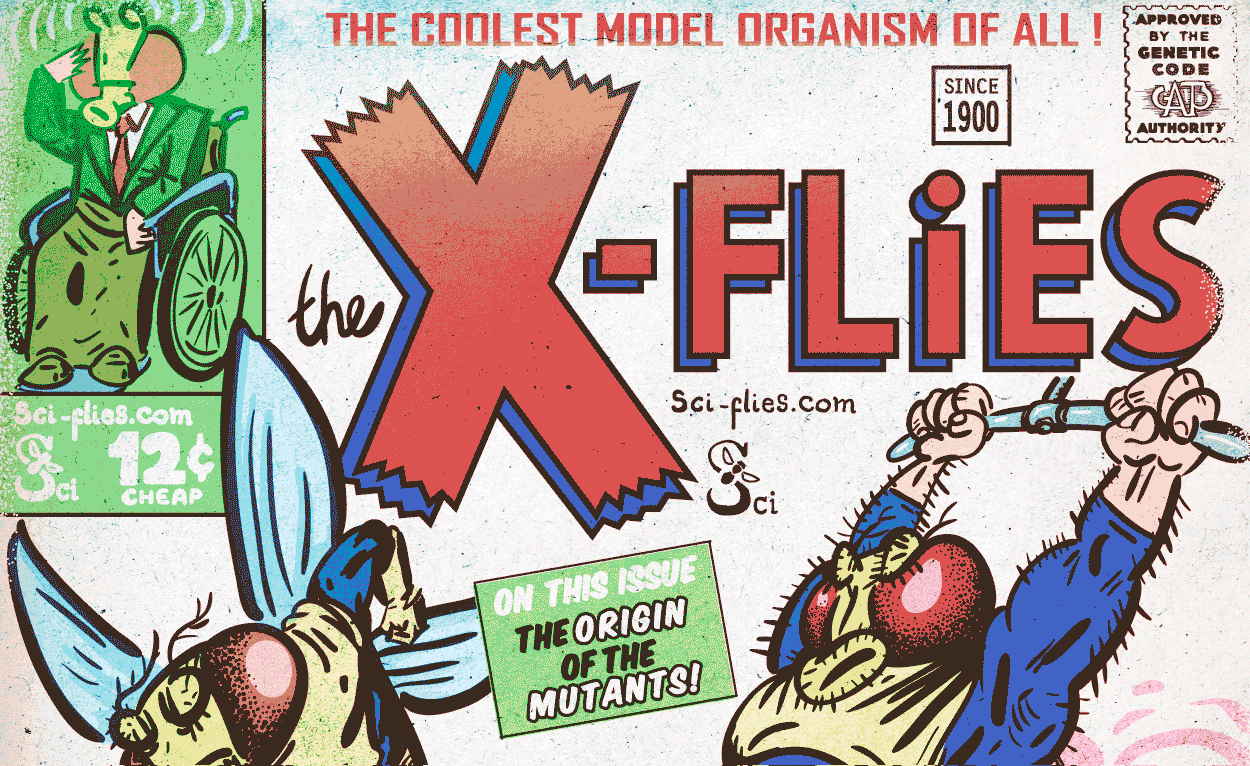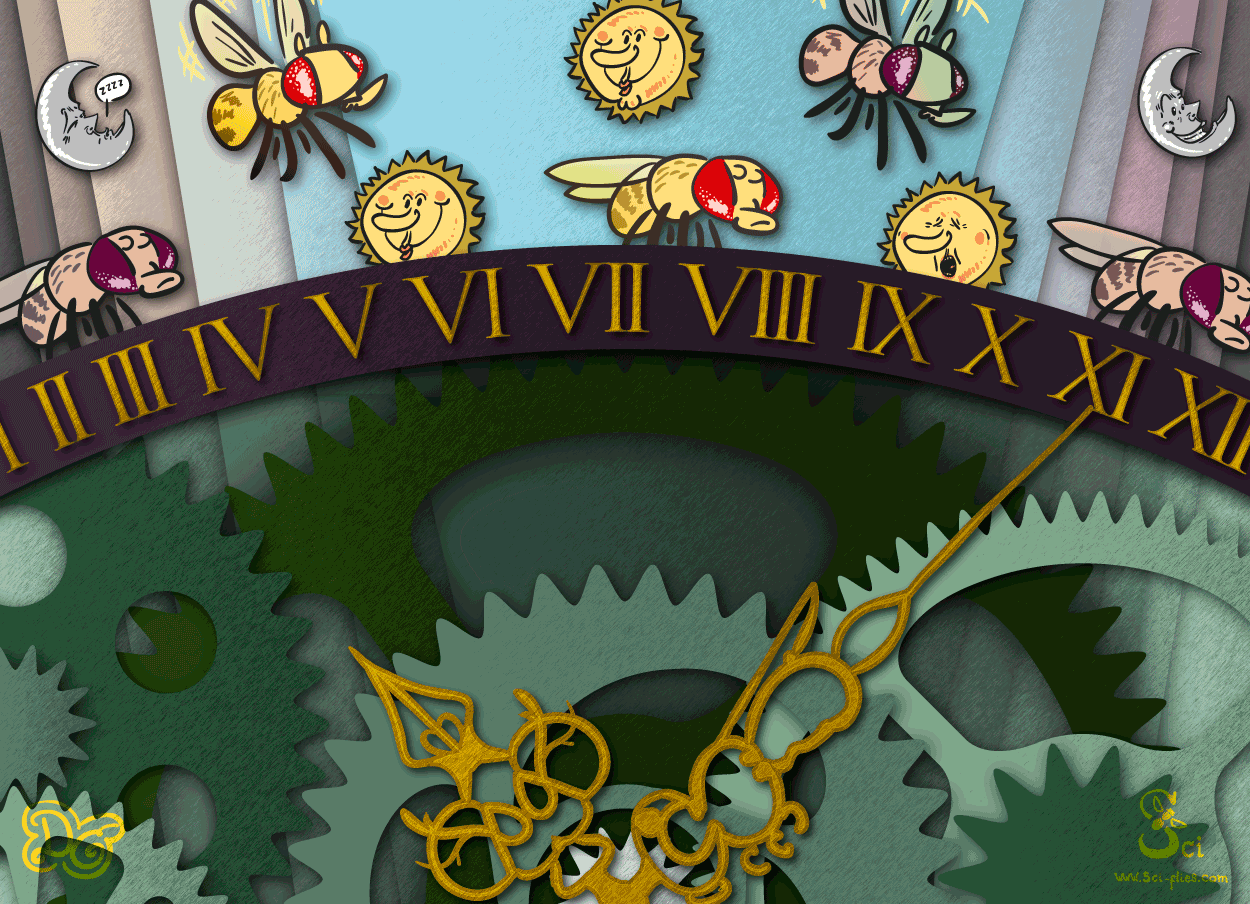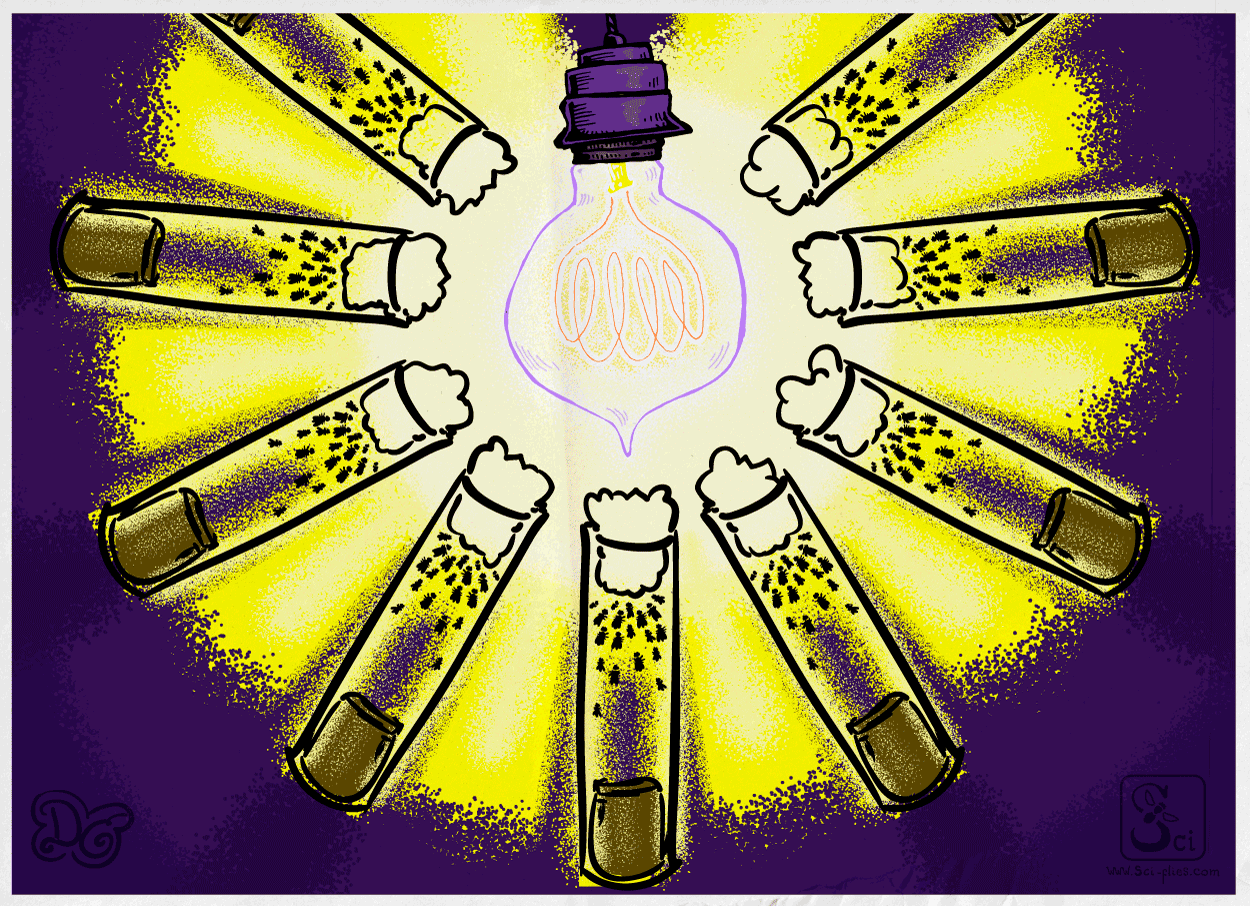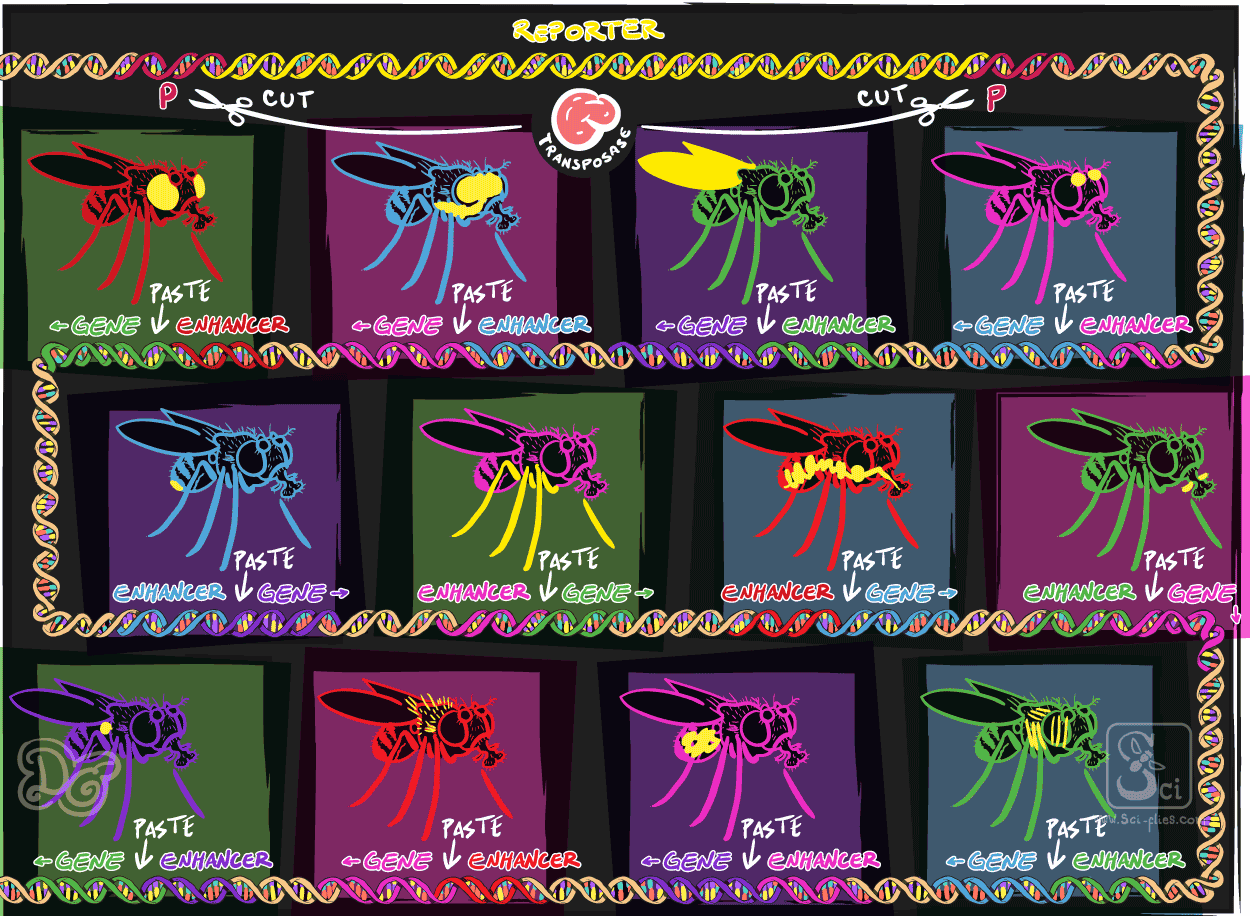To court or to eat? That is the question
We have all been there. You have waited for ages to get someone’s attention but suddenly you really need to pee. You want to keep up with the conversation and all you can really think is food. The phone is ringing but the food is about to get burned in the kitchen. Although we think we are masters of multitasking, there are simply things that we cannot do simultaneously. In many situations, we have to take a decision, to make a behavioral choice.
Animals are not different in that sense. In certain situations, an animal has to choose between two activities, both important yet incompatible. But, how to choose? Or, more specifically, how does the brain know which is the right choice?
In a recent paper, researchers from the University of Birmingham asked these questions using our favorite model organism, the fly Drosophila melanogaster. The study led by Dr. Carolina Rezaval investigated how flies decide between two very important behaviors for its survival: feeding or courting a female. They analyzed the underlying neuronal mechanisms, in other words, which specific neurons in the brain, and which cues from the environment and from inside the animal are essential to make this behavioral decision.
If a male fly is very hungry and sexually aroused, he will choose to eat over courting a female. This is not because the male fly is weak and cannot court. Actually, if a different male (also hungry and ready for sex) is in front of a female and no food is available, he will court her as vigorously as a well-fed male would do. This means that the male is actively choosing food over the female.
So, if his options are to starve to death or to try his chances to get a sexual partner, the male will go for the food. So far, it does not look like a difficult decision.
But not everything is black or white.
On the one hand, as soon as they get some food in their stomach, they will directly start courting the female. The authors found that this decision is gradual: the hungrier the flies are, the more time they will spend feeding instead of courting. On the other hand, if the males have recently copulated, they will prefer food over a sexual partner, even if they are not that hungry.
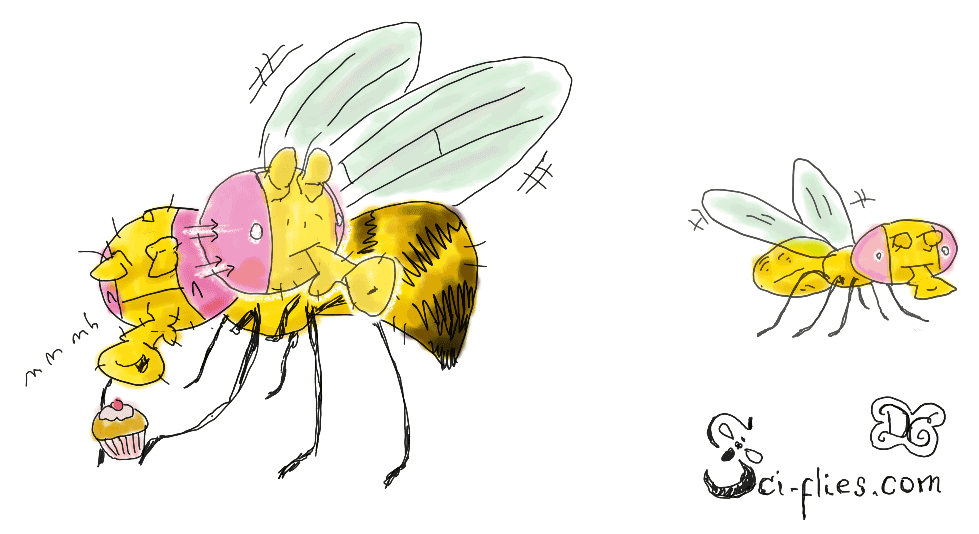
The behavioral choices are flexible and depend on our internal state (am I hungry? Am I sexually aroused?), as well as the external options (is there food available? Is there a possible sexual partner in the room?).
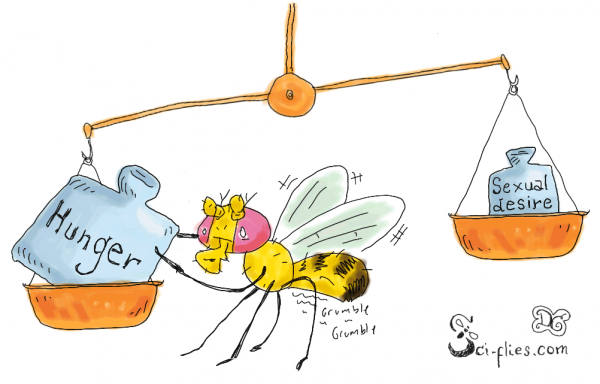
If there is a decision to make, then probably the brain is involved.
But which neurons?
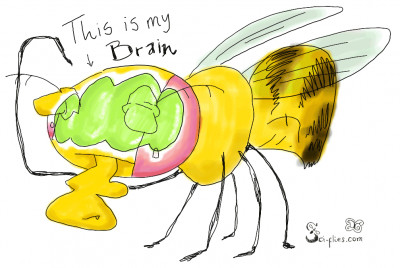
Neurons are cells within our brain and nervous system that are responsible for receiving sensory information, command muscle activity, and communicate the electrical signal in every intermediate step. In most cases, there are electrically excitable cells with a high degree of compartmentalization: the dendrites, the soma or cell body, and the axon.
The transmission of the information starts with the detection of a signal in the dendrites, which triggers a change in the electrical properties of the neuron. If those changes are big enough, they initiate what we call an action potential that propagates via the soma into the axon. In the axon, the change of electrical properties of the cell membrane, caused by the action potential, triggers a chain of actions that ends with the release of a signal (electrical or chemical) into another neuron or muscle.
The region where two neurons or a neuron and a muscle cell are connected is called a synapse. Essentially, there are two types of synapses: chemical and electrical synapses.
In the case of a chemical synapses, when the action potential reaches the tip of the axon (axon terminal), this triggers the release of vesicles filled with neurotransmitters (synaptic vesicles) outside the neuron and into the synaptic cleft (the space between the two cells communicating). There are several different types of neurotransmitters with different molecular nature, but they all bind to specific receptors in the membrane of the second neuron (postsynaptic neuron) or muscle cell and they either activate (turn on) or inactive (turn off) those cells.
Electrical synapses are a bit less common, but there are incredible important for the communication between neurons, especially when very fast reactions are required like in defensive reflexes. In an electrical synapse the two neurons are very close to each other, and they form channels (gap junctions) through which the electric current (but also very small molecules like salt, vitamins, sugar and amino acids) passes.
And here is when things get interesting.

The scientists counted on two excellent tools used in Drosophila: the powerful system UAS-GAL4 and the possibility of doing large-scale screening easily.
By using the UAS-GAL4 system the authors could artificially activate (turn ON) or inactivate (turn OFF) neurons to see what effects they have on the behavior of the flies, and to reduce the levels of certain molecules to see if they are important.
Additionally, the authors teamed up with a research group in Oxford University who studied what signals turn ON and OFF specific neurons via expression of activity markers, once again, using the fabulous UAS-GAL4 system.
In order to activate/ inactive or simply follow the activation of neurons the authors used genetic tools that are widely used in Drosophila.
They expressed an ion channel sensitive to temperature (TrpA1) in the membrane of the candidate neurons. When the temperature is high, the channel opens and lets the ions calcium and sodium inside, triggering the activation of the neuron.
To block the activity of neurons, they expressed the tetanus toxin light chain protein (TNT). This protein goes to the neuronal terminals where it blocks the synaptic neurotransmission, so even if the neuron receives the information to be activated, the communication dies there, since it cannot transmit it further.
Finally, to follow the activity of the neurons, they expressed a calcium sensor inside the candidate neurons. When a neuron is activated or depolarized the levels of the ion calcium increase, and this leads to the release of neurotransmitters. The genetically expressed calcium sensor (GCaMP) is a fluorescent protein that dramatically increases its fluorescence intensity when it binds to calcium, so it can tell us if the neuron has been activated by a certain signal or not.
Let us imagine the following scenario. We suspect that the neurons X have a membrane receptor for the neurotransmitter adrenaline. We genetically expressed GCaMP in the neurons X and we make a little window in the head of the fly so that we can see the brain (and particularly these neurons!) and we put the fly under a fluorescence microscope. We should be able to see the neurons X fluorescing weakly, what is called the basal fluorescence. We then add adrenaline. What will happen? If we were right, then the fluorescence inside the neurons X will increase!
There are also some neurotransmitters and neuromodulators that inhibit the basal activity of the neuron. In some cases, it would be possible to see a decrease in the basal fluorescence of GCaMP, but there are actually better genetic tools to study neuronal inhibition.
And what did they find?
The researchers found that there are two sets of neurons that are oppositely modulated by the hunger state (internal signal) and the presence/absence of food (external signal), and the balance between these two populations of neurons will determine if courtship or feeding behavior is favored.
These neurons are the PLP neurons and the P1 neurons, the former promoting feeding and the later, courtship.
How is hunger state acting in these neurons?
The signaling molecule Tyramine is normally produced in the fly, and it acts as a satiety signal. If the animal has eaten enough, Tyramine goes up; it decreases the activity of the PLP neurons, and suppresses feeding.
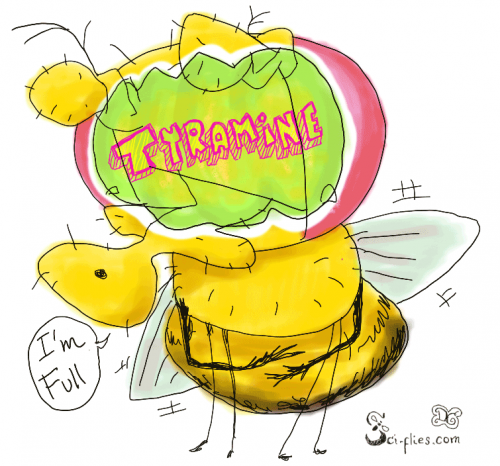
In addition, Tyramine activates P1 neurons, promoting courtship.
So, in a well-fed fly, Tyramine is up, reducing feeding and increasing courtship.
When flies are hungry, Tyramine levels drop. With less Tyramine, there is less suppression of feeding.
In addition, if food is available, this also activates PLP neurons and represses P1 neurons.
So if a fly is hungry and food is available, the neurons that promote feeding are really active and the neurons promoting courtship are really repressed, so the brain “chooses” to eat over courting.
On the contrary, if a male is full and ready for sex, the levels of Tyramine will be so high that he will choose to court instead of feeding.
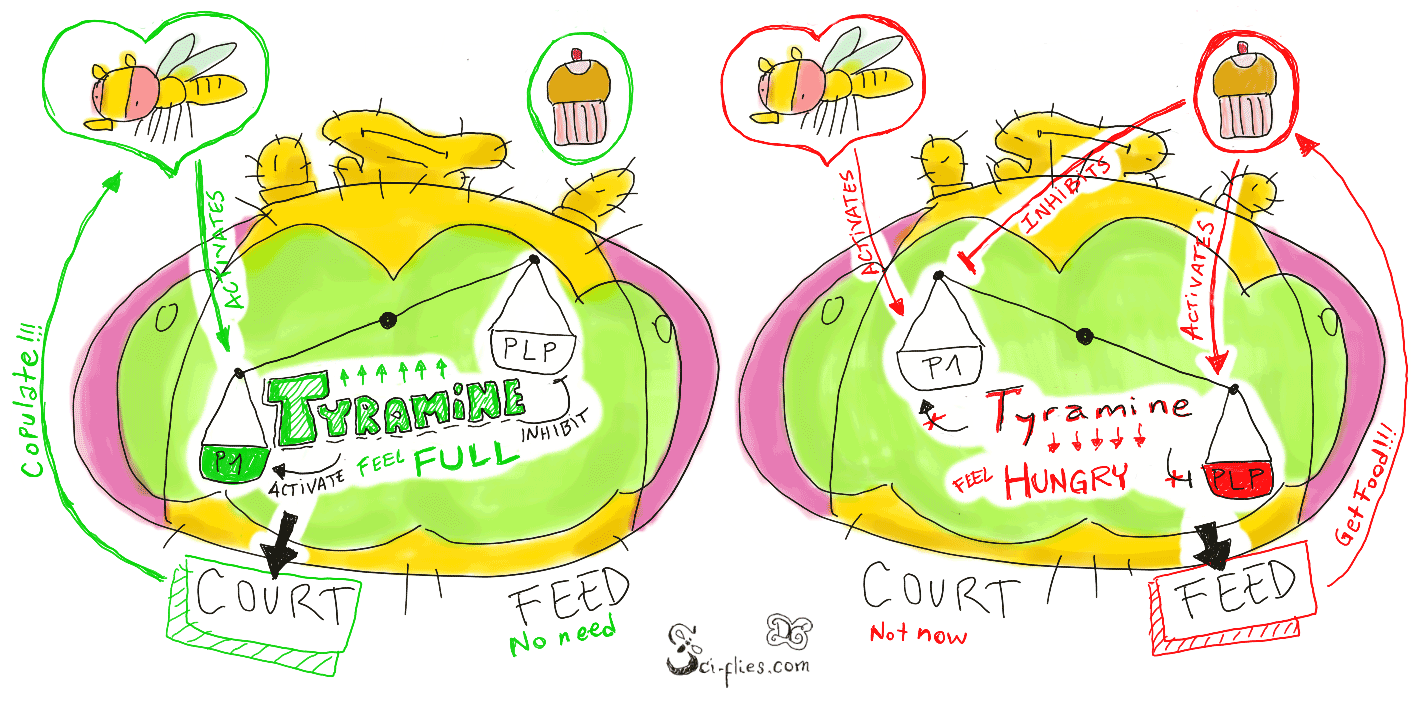
This is a fantastic system that the fly brain has to decide which behavior to prioritize (feeding or courting), taking into consideration the fly’s current needs and the available options.
Yes, it is amazing!
As usual, this study opens new interesting questions.
- How are starvation and satiety signals coordinated in less extreme situations where the behavioral choice is less obvious?
- How does hunger alter Tyramine levels?
- What about other animals? Are homologous neurons and signals involved in this type of decision in mammals?
- And how does it work in other conflicting situations? Are there similar set of neurons that decide between other behaviors, for example to feed or escape
Hopefully we will get some of these answers in the near future.
See you soon, fly lovers.
Note:
– This discovery was published in August 2021 in the Journal Current Biology. You can find the original paper here: Cheriyamkunnel et al., 2021, Current Biology 31, 1–15.
– This is the first paper of the Rezaval’s lab. You can find out more about their projects in the official website from the lab or in their Twitter account (@crezaval).
– This article is sci-flies’ interpretation of the published research paper. Sci-flies.com is not affiliated to the authors, institutions or publishers of this research. We do it because we like it!
